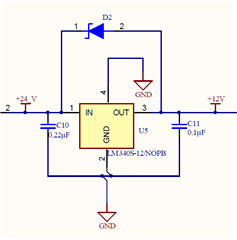The datasheet of LM340S-12 says Dropout voltage is 2v, maximum input is 35V.
Can anyone help confirm is it ok if I use it in the circuit input 24V DC, output 12VDC, maximum load current 0.5A, and how to calulate the thermal /temperature rising? Thanks in advance!


